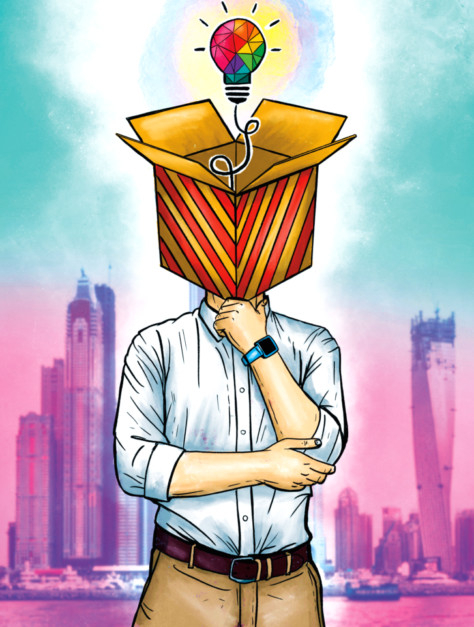
The GCC, and specifically the UAE, is home to an ambitious agenda that seeks to build cohesive cities that promote people’s health and well-being. Home to a diverse group of demographics, this region is seeing increased uptake in demand for community living that is human-centric and designed around people’s needs and aspirations.
Millennials currently account for nearly 41 per cent of the Gulf’s population, according to Oxford Economics. The needs and expectations of this demographic are becoming more globalised, due in part to the rise of technology and hyper-connectedness.
The result is an adaptable environment that caters to how people choose to live, work and play. Walkable, mixed-use neighbourhoods that offer a greater sense of belonging are increasingly being sought after. With so much change around us, the real challenge and opportunity for developers lies in staying ahead of the four mega trends shaping the future of these mixed-use destinations.
Integrating placemaking principles into communities planning and design will be key to unlock long-term emotional and functional value.
1) Communities will cater for people’s health and well-being
In the past, community planning was based on standard functional models that were easy to replicate, ones that consumers were expected to adapt to. As demographics change and expectations transform, developers have the opportunity to reverse the traditional one-size-fits-all approach to community design, development and planning.
There is a strong need to create progressive, forward-thinking spaces that enable communities to thrive. As developers, we must look beyond brick-and-mortar by investing in natural landscapes as well as open spaces that foster well-being and human engagement.
This approach is strongly embedded in Majid Al Futtaim’s community in Dubai, Tilal Al Ghaf. It will feature more than 355,000 square metres of landscaped open space, 18 kilometres of walkable trails and 11 kilometres of cycling paths that encourage social interaction.
Today’s consumers want more than just functional living solutions, and while cost and convenience will remain relevant, experiences will become extremely important. They are exposed to so many lifestyle options, and a wealth of information at their fingertips whether through digital avenues, social media channels or extensive travel.
Their preferences change at a faster pace and so do their demands for living environments. That is why, building flexibility into community design will be crucial to keeping experiences relevant and current.
2) New technologies will become a cornerstone of community design
For decades, technology has helped revolutionise the way we design and build living solutions — from the introduction of the elevator, to modern day smart home solutions that function on the internet of Things (IoT) principle. The future will see even wider applications across community design. We believe customer experience and sustainability will be two of the most prominent areas for its use.
Data analytics, for instance, allows us to gain granular insights into consumers’ preferences and pain points, enabling us to hyper-personalise community offerings. Analytics also makes it possible to pinpoint specific areas of water and energy wastage and to accurately predict consumption trends. Applications such as these will go a long way towards improving efficiency and ensuring the long-term sustainability of communities in the region.
3) Developers’ approach to sustainability will become more pragmatic
As our cities continue to expand, an ever-growing burden is being placed on resources that are essential to human life such as water and energy. In fact, over 60 per cent of the population of the Middle East and North Africa lives in areas of high or very high water stress, compared to some 35 per cent for the rest of the world, according to a World Bank Group report.
There is a need to understand that sustainability does not result in securing resources for eternity, but that sustainable practices can only extend the life of our resources for a finite amount of time. This significantly alters our view towards community design and, in the future, more developers will seek renewable energy solutions that will be deployed alongside smart technology to taper the consumption of resources, while ensuring a seamless experience for customers.
4) Build Flexibility for the win
For developers, the changing landscape requires a more dynamic approach to community design and build — one that is adaptable to change and sustainability challenges. Developers need to actively respond to trends and cater to the demand for personalisation, by addressing steadily changing market and consumer needs with greater agility.
From a sustainability perspective too, developers will need to consider embedding flexibility and robustness into their plans and designs, to optimise the use of resources and ultimately, create community living that strikes a balance between the emotional and functional value.
The mixed-use community market in the region is at a critical, albeit exciting juncture. Demand will continue to grow, while a discerning, fast-moving consumer plays a pivotal role in shaping the product.
There is no doubt that developers looking to thrive in this new era will face numerous challenges. Yet, the future is ripe with new opportunities. Learning has to be constant for it to be effective, and developers who apply new principles and dynamics to redefine community living, will unlock value for the entire ecosystem of stakeholders, far beyond our imagination.
Hawazen Esber is CEO of Communities at Majid Al Futtaim — Properties.












